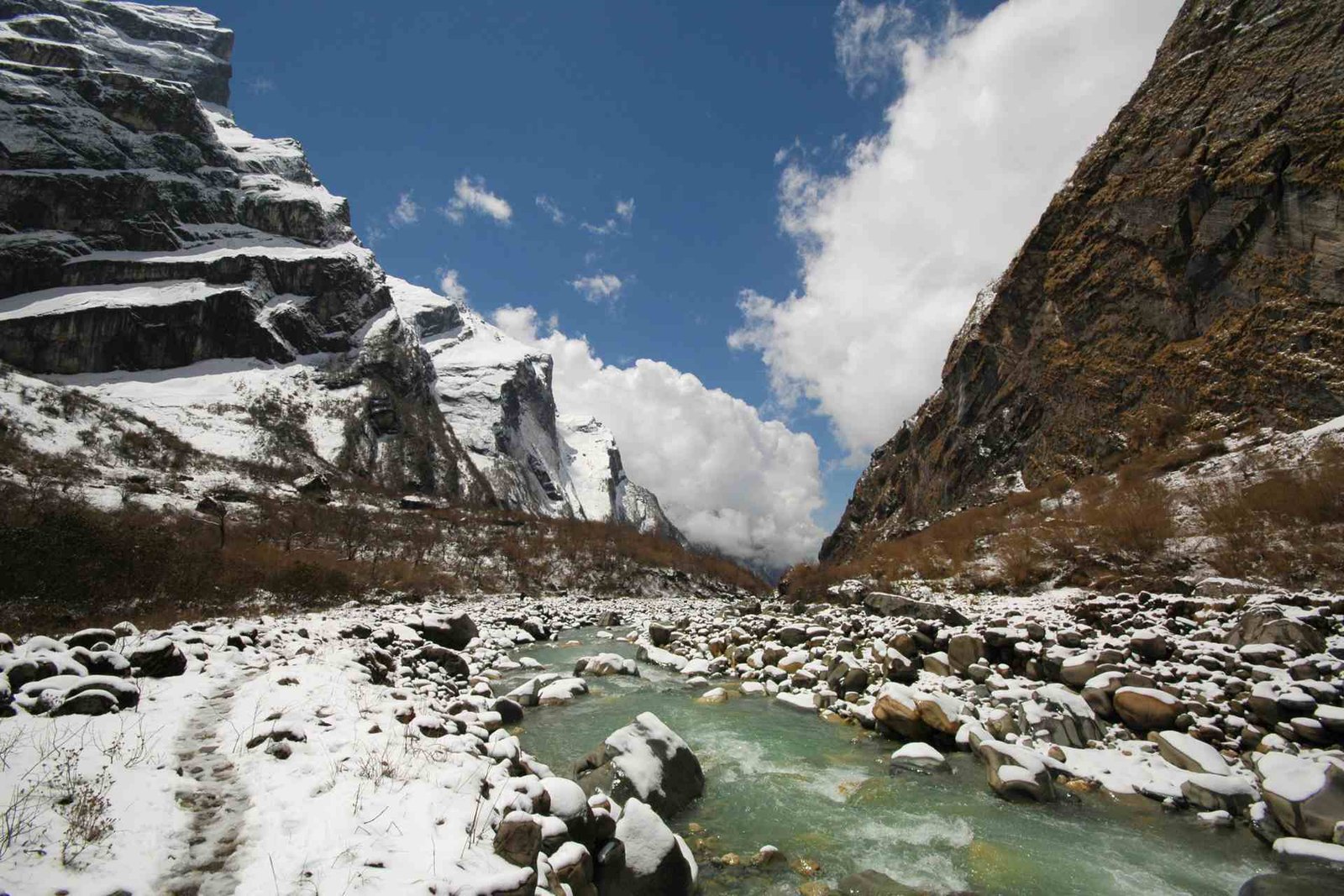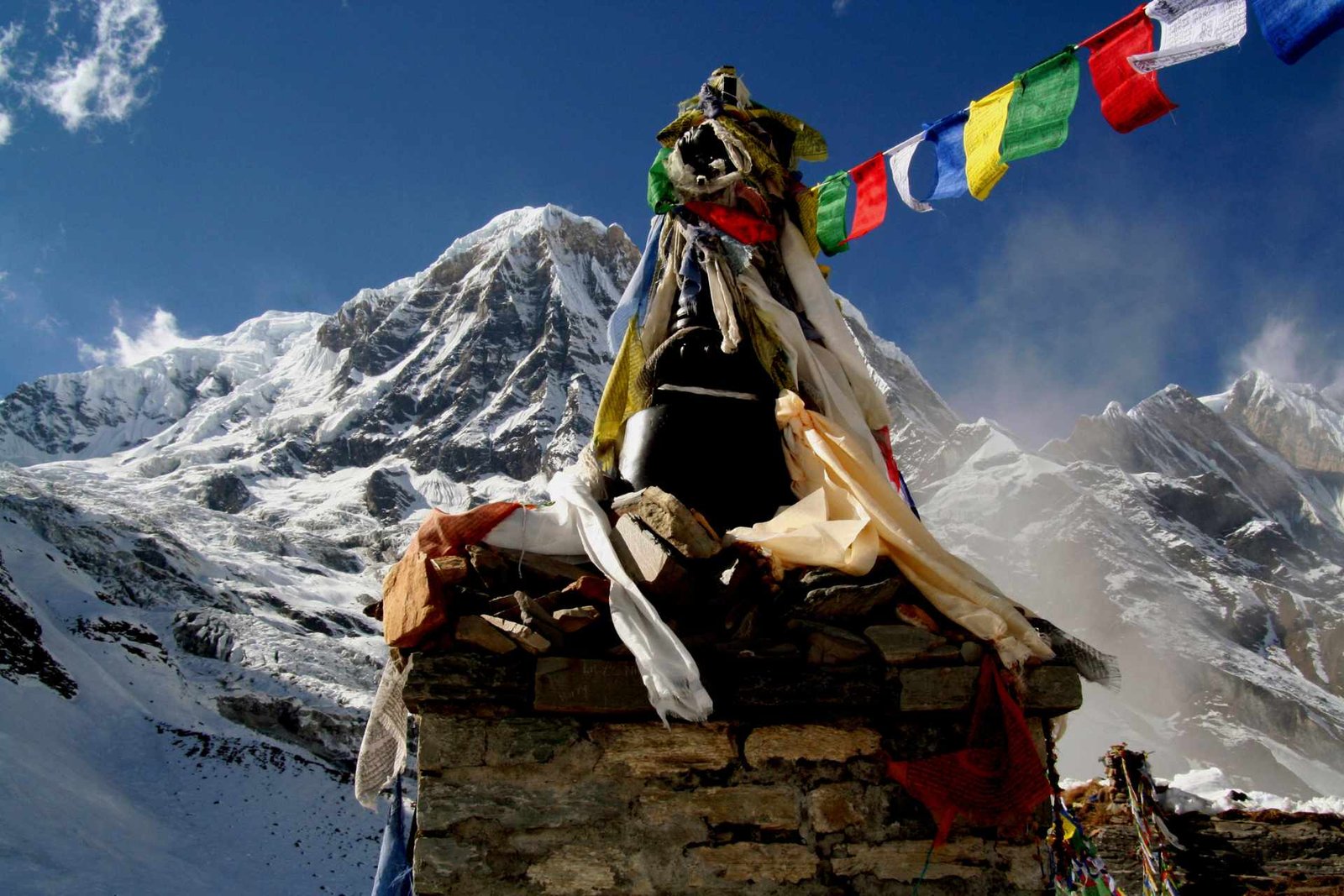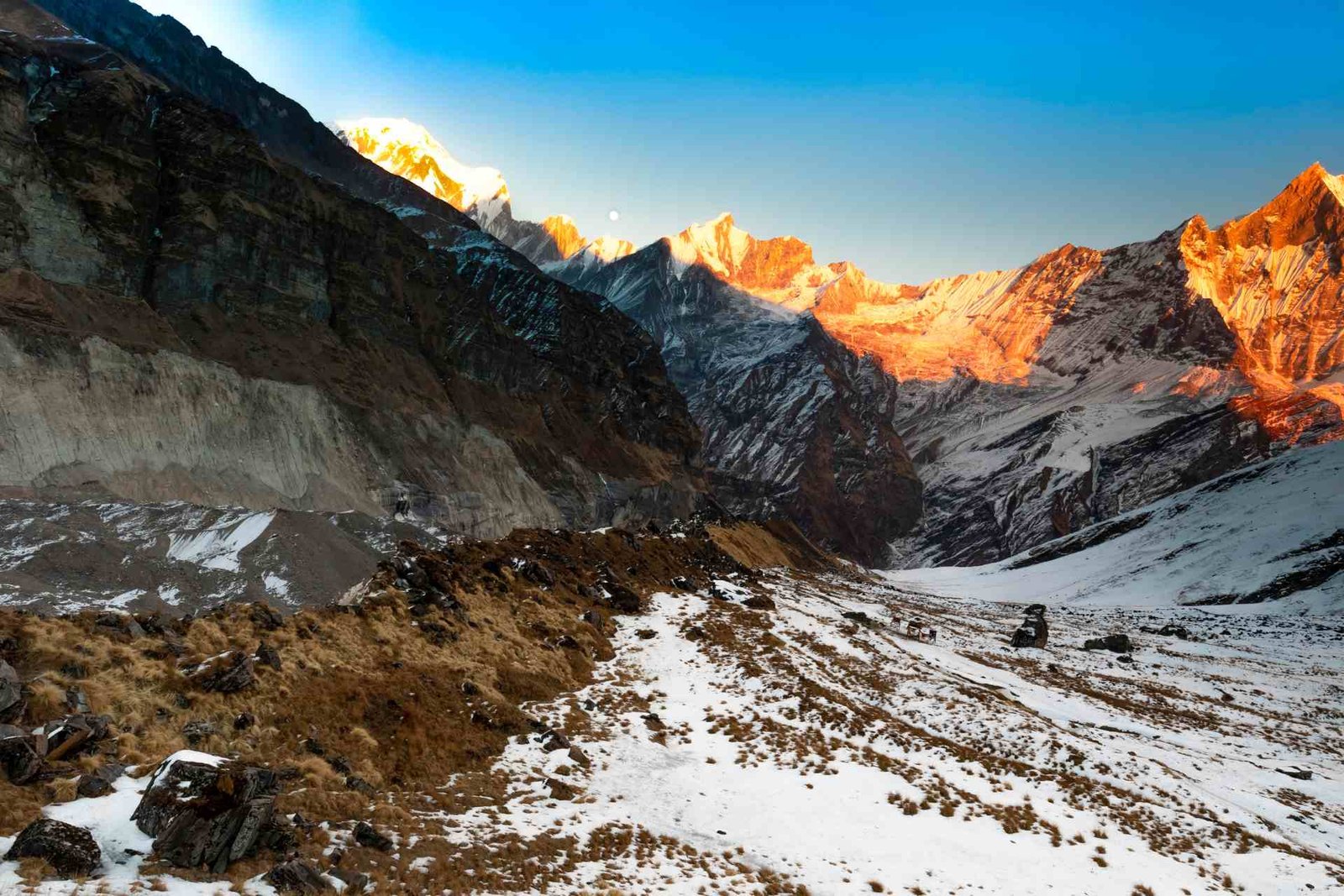Discover the Magic of Annapurna Base Camp: A Trekker's Paradise

Table of Contents
Introduction to Annapurna Base Camp
The Annapurna Base Camp trek is in the Nepalese Himalayas. It offers a perfect adventure for nature lovers and trekkers. This iconic journey takes you through diverse landscapes. It has lush rhododendron forests and barren, high-altitude terrain. It ends at the awe-inspiring Annapurna Sanctuary.
The Nepal Annapurna Base Camp trek is famous for its stunning views of the Annapurna massif. It includes the mighty Annapurna I (8,091 m) and the sacred Fishtail peak, Machhapuchhre. On this journey, you’ll experience the local culture. You’ll see stunning sunrises and sunsets. You’ll examine your physical and mental limits.
Planning Your Trek
Careful planning is essential before setting out on your Annapurna Base Camp adventure. Here are some key factors to consider:
Permits: Get the necessary licenses, including the Annapurna Conservation Area Permit (ACAP) and the TIMS card.
Choose between hiring a knowledgeable guide or navigating the trail alone. A guide can provide valuable insights and support, especially for first-time trekkers.
Fitness: Prepare physically for the trek by doing cardio exercises and strength training.
Itinerary: Plan your itinerary. Allow for acclimatization days and flexibility for unexpected events.
To help you visualize your journey, refer to a detailed Annapurna Base Camp trek map. This will give you an idea of the route, elevation changes, and key landmarks.

The Route: A Journey Through Diverse Landscapes
The Annapurna Base Camp trek typically starts at Nayapul. It’s an hour’s drive from Pokhara. Here’s a brief overview of the route:
Nayapul to Ghandruk: Begin your trek through terraced fields and charming villages.
Ghandruk to Chhomrong: Climb through rhododendron forests with stunning mountain views.
Chhomrong to Dovan: Descend into the Modi Khola valley. Then, enter the Annapurna Sanctuary.
Dovan to Machhapuchhre Base Camp: Trek through bamboo forests and alpine meadows.
Machhapuchhre Base Camp to Annapurna Base Camp: The final ascent to your goal.
Each day brings new challenges and rewards. The landscape shifts as you gain altitude. The trek usually takes 7-12 days, depending on your pace and acclimatization needs.
Altitude and Acclimatization
The altitude of Annapurna Base Camp is 4,130 meters (13,550 feet) above sea level. As you ascend, it’s crucial to be aware of the effects of high altitude on your body. Here are some tips for proper acclimatization:
Ascend slowly, following the “climb high, sleep low” principle.
Stay hydrated by drinking plenty of water.
Avoid alcohol and cigarettes.
Listen to your body and rest when needed.
Consider taking Diamox after consulting with your doctor.
Remember, altitude sickness can affect anyone, regardless of fitness level. If you experience severe symptoms, descend immediately and seek medical attention.
Costs and Budgeting
The Annapurna Base Camp trek cost can vary depending on several factors, including:
Duration of the trek
Choice of accommodation (teahouses vs. luxury lodges)
Hiring a guide and a porter.
Transportation to and from the trailhead.
Equipment rental (if needed)
On average, budget travelers can expect to spend around $20-$30 daily for food and accommodation on the trail. Adding guide and porter services, permits, and transportation, a 10-day trek can range from $600 to $1,200 per person.
Best Time to Visit

The best time to trek to Annapurna Base Camp depends on your preferences and tolerance for different weather conditions.
Spring (March to May): Ideal for clear mountain views and blooming rhododendrons.
Autumn (September to November): The most popular season, offering stable weather and clear skies.
Winter (December to February): Cold temperatures, but fewer crowds and crystal-clear views.
Summer/Monsoon (June to August): Challenging due to rain and leeches, but unique for its lush landscapes.
Each season has its charm, so choose the one that aligns best with your trekking goals and comfort level.
Proper gear is crucial for a comfortable and safe Annapurna Base Camp trek. Here’s a list of essential items to pack:
Sturdy hiking boots
Warm, moisture-wicking layers
Waterproof jacket and pants.
Sleeping bag (rated for cold temperatures)
Trekking poles
Water purification system
First-aid kit
Sun protection (hat, sunglasses, sunscreen)
Headlamp with extra batteries.
Camera to capture the breathtaking views.
Cultural Experiences Along the Way


One of the highlights of the Annapurna Base Camp trek is the opportunity to immerse yourself in the local culture. As you pass through various villages, you will encounter:
Traditional Gurung and Magar communities.
Ancient Buddhist monasteries and prayer wheels.
Local cuisine, including the famous Dal Bhat.
Warm hospitality of the Nepalese people.
Interact with locals. Learn their customs. Join cultural activities if you can. This will enrich your trekking experience and create lasting memories.
Flora and fauna of the Annapurna Region

The Annapurna region boasts incredible biodiversity. As you trek, keep an eye out for:
Rhododendron forests in full bloom (spring).
Rare orchids and medicinal plants.
Himalayan tahr and blue sheep.
Elusive snow leopards (though sightings are rare).
Various bird species, including the colorful Danphe (the national bird of Nepal).
Remember to practice responsible tourism. Follow Leave No Trace principles. It will preserve the fragile ecosystem for future generations.


Safety Considerations
The Annapurna Base Camp trek is mostly safe. But, be ready for some challenges.
Altitude sickness: Monitor yourself and others for symptoms.
Prepare for sudden weather shifts, especially at higher altitudes, as weather changes frequently.
Trail conditions: Some sections can be slippery, especially during and after the monsoon.
Physical fitness: Ensure you’re in good shape before attempting the trek.
Travel insurance: Purchase comprehensive travel insurance that covers high-altitude trekking and emergency evacuation.
Always prioritize safety and overreaching your destination. Feel free to turn back or seek help if you feel unwell or unsafe.
Conclusion
The Annapurna Base Camp trek blends nature, culture, and a personal challenge. From the moment you step onto the trail to the triumphant arrival at the base camp, every day brings new wonders and experiences.
As you plan your trip to this Himalayan paradise, remember: Proper prep and respect for the environment and locals are key to a successful trek. Whether you’re a seasoned trekker or a first-time adventurer, the Annapurna Base Camp awaits. It has majestic peaks and warm hospitality. You’ll make unforgettable memories.
Are you ready to embark on this life-changing adventure? Start planning your Annapurna Base Camp trek today and discover the magic of the Himalayas for yourself.
Looking for more trekking inspiration? Check out our guide to the Everest Base Camp trek, Manaslu Circuit, Langtang Valley Trek, and Upper Mustang, or discover hidden gems in Nepal’s lesser-known trails. If you want to explore the world beyond the Himalayas, dive into our top picks for global trekking adventures. Each trail has its own unique charm and unforgettable experiences waiting for you.
Glimpses of Annapurna Base Camp






FAQ for Annapurna Base Camp
The Annapurna Base Camp (ABC) trek is a popular adventure in the Nepalese Himalayas. It offers trekkers stunning views of the Annapurna massif and Machhapuchhre (Fishtail peak). The trek passes through diverse landscapes, including rhododendron forests and high-altitude terrain, and ends at Annapurna Sanctuary.
The trek typically takes 7-12 days, depending on your pace, itinerary, and acclimatization needs.
The best seasons are:
– **Spring (March to May):** Clear views and blooming rhododendrons.
– **Autumn (September to November):** Stable weather with clear skies.
– **Winter (December to February):** Cold but fewer crowds.
– **Monsoon (June to August):** Lush landscapes but challenging conditions.
Trekkers need two permits:
– Annapurna Conservation Area Permit (ACAP)
– Trekker’s Information Management System (TIMS) card.
– **Fitness:** Engage in cardio and strength training.
– **Guide or Solo:** Consider hiring a guide for safety and local insights, especially for first-time trekkers.
– **Acclimatization:** Plan your itinerary with rest days to adjust to altitude changes.
Annapurna Base Camp sits at 4,130 meters (13,550 feet). Proper acclimatization is crucial to avoid altitude sickness.
Budget travellers can expect to spend around $20-$30 daily on food and accommodation. Including permits, guide/porter fees, and transportation, the total cost for a 10-day trek ranges from $600 to $1,200 per person.
Key items include:
– Sturdy hiking boots
– Warm layers and waterproof clothing
– Sleeping bag, trekking poles, and first-aid kit
– Sun protection and a water purification system
Trekkers will pass through Gurung and Magar villages, see Buddhist monasteries, and experience Nepalese hospitality and cuisine, including Dal Bhat.
Trekkers might encounter rhododendron forests, rare orchids, Himalayan tahr, blue sheep, and various bird species like the Danphe, Nepal’s national bird.
– Be cautious of altitude sickness.
– Prepare for sudden weather changes.
– Monitor trail conditions, especially during the monsoon season.
– Ensure you have travel insurance covering high-altitude trekking.

Beautiful place 💓💓💓💓💚